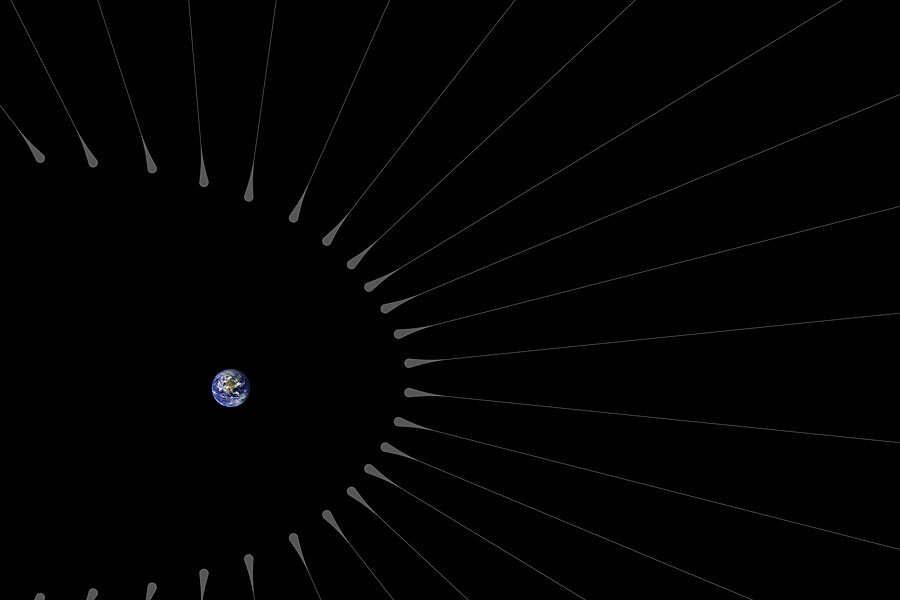Is Earth really surrounded by 'hairy' dark matter?
Dark matter could form “hairs” around planets, like Earth, according to NASA.
The invisible, mysterious matter – which is thought to make up about 85 percent of all the matter in the universe – forms long “fine-grained streams” of particles.
"A stream can be much larger than the solar system itself, and there are many different streams crisscrossing our galactic neighborhood," study author Gary Prézeau, a NASA scientist at the Jet Propulsion Laboratory, said in a NASA news release.
So what happens when these streams interact with planets?
Dr. Prézeau made computer simulations to see what would happen when our own planet met a stream of dark matter. He found that the Earth’s gravity would actually manipulate the stream of particles into a thin, dense hairlike filament.
Ordinary matter may not be able to pass through the Earth, but dark matter sees no obstacle in the planet. The mysterious particles would pass right through Earth’s atmosphere, crust, and even its core.
The dark matter particles that pass through the Earth’s core would focus into a “root” of hair. Prézeau’s simulations show that the root of the hair is super dense, about a billion times more than average.
That dense root would end up some 600,000 miles from the surface of Earth. To put that in perspective, the moon is some 240,000 miles from Earth.
The “tip” of the hair would be the stream of particles that just graze the Earth’s surface. These points would likely be twice as far from the Earth as the root.
These hairy filaments could help scientists unlock more insights into the mystery of dark matter. "If we could pinpoint the location of the root of these hairs, we could potentially send a probe there and get a bonanza of data about dark matter," Prézeau said.
Charles Lawrence, chief scientist for JPL’s astronomy, physics, and technology directorate, agreed. ”Dark matter has eluded all attempts at direct detection for over 30 years. The roots of dark matter hairs would be an attractive place to look, given how dense they are thought to be,” he said in the release.
Scientists are certain dark matter exists because they have observed its gravitational pull in the universe.
Prézeau’s findings could also have important implications for planetary exploration too. His simulations reveal that the changes in density in a planet are reflected in the hairs. So as the stream of dark matter particles passes through the inner core, the outer core, the mantle, and then the crust of the Earth, “kinks” appear in the hairs that correspond to those transitions.
If scientists figure out how to detect this information in dark matter, they could learn more about distant cosmic bodies from the mysterious matter. Those clues could help scientists understand the insides of distant bodies, their layers and perhaps the extent of oceans on icy bodies.
Prézeau's paper appears this week in the Astrophysical Journal.






